Program conference: Bees without borders
<span id="bienenhotels"></span>
Program Bees without borders, november 21, 2020
The deep time: a global perspective for current and future changes in biodiversity
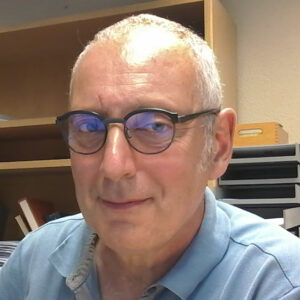
Title of the conference
The deepness of time: a global perspective for current and future changes in biodiversity.
Contents
With the extinction of almost 90% of marine species in a time interval in the order of 50,000 years, the greatest mass extinction in the history of life occurred 251 million years ago, forming the sharp boundary between the Paleozoic and Mesozoic worlds. This natural experiment provides a wealth of information on the mechanisms that regulate biodiversity over the long term (>10,000 years) and makes it possible to place current short-term variations in biodiversity, climate and the carbon cycle in a longer time frame and at a global scale. Following a strong initial disturbance of volcanic origin, a succession of three successive extinction and diversification cycles linked to the out of equilibrium functioning of the carbon cycle during the reconstruction of the biological pump (biomass of primary producers) explains the 5 million year delay that was necessary to recover a globally stable environment, thus allowing the evolution of complex ecosystems such as reefs. The destruction of natural habitats and biomass in conjunction combined with the out-of-balance dynamic behaviour of the carbon cycle are the fundamental causes of these successive extinctions. A single episode of geologically brief but massive pollution of extrinsic origin (volcanism, or possibly anthropogenic volatiles) pushing the carbon cycle out of equilibrium accompanied by the destruction of primary production which normally acts as a buffer for this cycle can therefore lead to major extinction crises with repetition in parallel with extreme climatic upheavals.
Speaker
A geologist and palaeontologist, Dr. Hugo Bucher has been working with his multidisciplinary team (palaeontology, paleo-ecology, geochemistry of stable and radiogenic isotopes, ocean-atmosphere climate modelling) for about twenty years on the greatest mass extinction (Permian-Triassic boundary) and the long restoration of biodiversity that followed. Based at the University of Zurich for palaeontology, the multi-disciplinary extensions of this work also involve teams from the Universities of Lausanne and Geneva, with field research all over the world. This work is regularly supported by the Swiss National Science Foundation, and the team led by Hugo Bucher is at the forefront of international research on large extinctions and the role of biotic-abiotic interactions in biological evolution.
Institutes
Paläontologisches Institut und Museum der Universität Zürich, D-ERDW ETHZ.
Scientific advisory board FREETHEBEES
Publications
Voir: https://www.pim.uzh.ch/institut/mitarbeitende/index.php?show=6&get=pu
An expert on tree cavities, the natural habitat of the honey bee
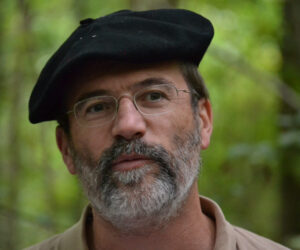
Title of the conference
Cavities in trees: Islands of ephemeral resources essential to many species inhabiting the forest.
Content
What is known about tree cavities and what is not yet known, with a focus on cavities that can be used by sociable bees: Genesis and dynamics, carrier trees, associated biodiversity, spatial distribution, influence of forest management.
Speaker
Ecologist and forestry advisor, Dr. Laurent Larrieu conducts his research at the National Research Institute for Agriculture, Food and the Environment in France. He is one of the European experts on “dendromicrohabitats”, morphological singularities carried by certain trees, which are living environments for thousands of species living in forests. Since 2002, his research on forest biodiversity has led him to study quite varied forms of cavities. He is the author of numerous scientific publications and popularisation documents, and has also participated in the writing of several specialised books.
Institutes
Laboratoire Dynafor (INRAe Toulouse) & CNPF-CRPF Occitanie (Centre National de la Propriété Forestière-Délégation d’Occitanie)
Some recent publications
Larrieu L., Paillet Y., Winter S., Bütler R., Kraus D., Krumm F., Lachat T., Michel A. K., Regnery B., Vandekerkhove K., (2018). Tree related microhabitats in temperate and Mediterranean European forests: A hierarchical typology for inventory standardization. Ecological Indicator 84: 194-207
Larrieu L., Gosselin F., Archaux F., Chevalier R., Corriol G., Dauffy-richard E.., Deconchat M., Gosselin M., Ladet S., Savoie JM., Tillon L., Bouget C. (2019) Assessing the potential of routine structural and dendrometric variables as potential habitat surrogates from multi-taxon data in European temperate forests. Ecological Indicators 104: 116–126
Bütler, R.; Lachat, T.; Krumm, F.; Kraus, D.; Larrieu, L., 2020: Guide de poche des dendromicrohabitats. Description et seuils de grandeur pour leur inventaire. Birmensdorf, Institut fédéral de recherches WSL. 59 p.
Bütler, R.; Lachat,T.; Krumm,F.; Kraus, D., Larrieu, L., 2020: Connaître, conserver et promouvoir les arbres-habitats. WSL. Not. prat. 64, 12 p.
Bütler R., Lachat T., Larrieu L., Paillet Y. – Habitat trees: key elements for forest biodiversity. (Chap 2.1, pp 84-92). In Kraus D., Krumm F. (eds) 2013. Integrative approaches as an opportunity for the conservation of forest biodiversity. European Forest Institute. 284 pp.
Bütler R. & Larrieu L. (2020). Présentations courtes de dendromicrohabitats. 25 vidéos. YouTube. https://www.youtube.com/playlist?list=PLIdocYDtv7TTtTKiBAm68tXZhV51v_JVB
RESEARCHER ON BEE ECOLOGY
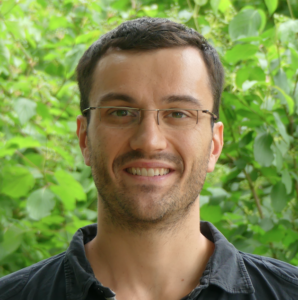
Title of the conference
Knowledge on wild populations of honey bees in Europe
Content
Beekeeping dynamics; genetic structure of colonies; hybridisation; natural selection; wild state; conservation status; population sizes; bee behaviour.
Influence of bee management on the genetics of honey bee populations. Survival of wild colonies and detection of conservation refuge areas in Europe.
Speaker
Dr. Fabrice Requier is a young researcher internationally recognised for his work on bee ecology. These latest studies on colonies of wild honeybees have aroused great scientific and public interest through their originality, the result of a new look at the “bee” issue. He works at the EGCE (Evolution, Genomes, Behaviour, Ecology) study centre in Paris, France.
Institutes
UMR EGCE, CNRS-IRD-University Paris-Saclay (www.egce.cnrs-gif.fr)
The most important publications
Requier, F., Paillet, Y., Laroche, F., Rutschmann, B., Zhang, J., Lombardi, F., Svoboda, F., Steffan-Dewenter, I. (2020) Contribution of European forests to safeguard wild honey bee populations. Conservation Letters, 13, e12693. https://doi.org/10.1111/conl.12693
Requier, F., Jowanowitsch, K.K., Kallnik, K., Steffan-Dewenter, I. (2020) Limitation of complementary resources affects colony growth, foraging behavior and reproduction in bumble bees. Ecology 101(3), e02946. https://doi.org/10.1002/ecy.2946
Requier, F. & Crewe, R.M. (2019) Learning from wild honey bees. Trends in Ecology & Evolution 34(11), 967-968. https://doi.org/10.1016/j.tree.2019.08.002
Requier, F., Garnery, L., Kohl, P.L., Njovu, H.K., Pirk, C.W.W., Crewe, R.M., Steffan-Dewenter, I. (2019) The conservation of native honey bees is crucial. Trends in Ecology & Evolution 34(9), 789-798. https://doi.org/10.1016/j.tree.2019.04.008
Requier, F., Odoux, J. F., Tamic, T., Moreau, N., Henry, M., Decourtye, A., Bretagnolle, V. (2015) Honey-bee diet in intensive farmland habitats reveals an unexpectedly high flower richness and a critical role of weeds. Ecological Applications 25, 881-890. https://doi.org/10.1890/14-1011.1
HONEY BEES IN THE WILD IN THE NORTH OF THE NEW AQUITAINE REGION
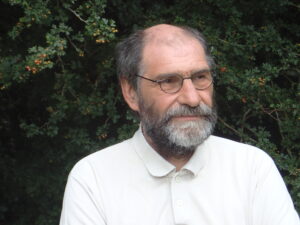
Contents
Provisional assessment of the demographic monitoring initiated in 2017 to understand the demography of colonies of bees living alone and unmanaged, in order to know if there is still a viable population in the wild. Spatial heterogeneity seems to be appearing between areas of intensive agriculture with high bee pressure, where the rates of introgression seem high based solely on the external appearance of the bees, and areas of breeding or heavily wooded areas, with lower agricultural and bee pressure, where the appearance of the bees suggests that the rate of introgression is less important. From the perspective of protecting the black bee, or at least locally adapted strains of bees under the pressure of natural selection (Darwinian beekeeping), “mainstream” beekeeping does not appear to be a solution, but part of the problem. This protection is not possible throughout the whole of our region, but only in certain sectors that are less intensively exploited by agriculture, such as beekeeping.
Speaker
Fascinated by insects since reading Fabre’s Entomological Memories as a child, Vincent Albouy began his entomological career by studying Dermaptera under the direction of Professor Claude Caussanel. For more than thirty years, he has been interested in common insects and their protection, particularly through natural or wild gardens. And for the last ten years or so, he has been working on honey bees in the wild, coordinating since 2017 a field study of the demography of honey bee colonies in the wild in Poitou-Charentes, which was extended in 2019 to the north of New Aquitaine.
Institutes
Former attaché at the entomology laboratory of the National Museum of Natural History in Paris, FFSSN
Former President of the Office for Insects and their Environment
A naturalist author, he has published various works on the commonplace nature and its protection.
The most important publications
1990 Faune de France des Dermaptères, en collaboration avec le professeur Caussanel, FFSSN
1995 Les Insectes, amis de nos jardins, Edisud
2005 Le jardin naturel, Delachaux et Niestlé
2009 Jardinez avec les insectes, Terran
2014 Nos abeilles en péril, en collaboration avec Yves Le Conte, Quae
2019 Abeilles mellifères à l’état sauvage, Une histoire naturelle, Terran
These wild honeybees that are resistant to varroa mites: mechanisms and host/parasite chemical communication.

Content
Varroa destructor has been a major concern of beekeepers for the health of domestic bee colonies since its arrival in Europe in the 1970s. The use of acaricide treatments to control this mite has inherent limitations: appearance of resistance, accumulation of residues, cost, etc…
In the long term, the use of varroa-resistant bees is a suitable solution for the bee and the beekeeper. Two different approaches can be developed in this perspective: selecting bees on relevant characteristics (physiological, behavioural…) or using populations of bee colonies that become naturally resistant to varroa. We will develop this second alternative.
Whereas wild colonies had been decimated when the parasite appeared, several bee populations now survive naturally in Europe, without any treatment to limit the impact of the parasite. These populations represent a hope for biodiversity and a major interest for scientists trying to explain these phenomena. They may be the basis for the selection of varroa-resistant bees and, moreover, knowledge of the survival mechanisms could highlight characteristics of interest for the selection of varroa-resistant bees. The mechanisms underlying these resistances are beginning to be well known, although they are not necessarily distributed in the same way in the different populations of varroa-resistant bees.
Speaker
Yves Le Conte, Biologist, has been practising beekeeping for 50 years. After university studies in Biology, he wrote a thesis on bee-varroa interactions, then joined the INRA in Avignon in 1990. Since then, he has been developing research programmes on chemical communication in bees, on the mechanisms, evolution and disturbance of social regulations in colonies, and on the bee parasite, Varroa destructor. In recent years, its activity has focused on understanding the phenomena responsible for the decline of bee populations with a multidisciplinary approach at the physiological, behavioural, ecological, pathological and toxicological levels in an experimental scale that extends from the gene to the landscape.
Institutes
Director of Research at INRA, for eight years he directed the Bee and Environment Research Unit of the Pôle Abeilles d’Avignon and is co-editor of the scientific journal Apidologie.
Publications
He has published 6 books on beekeeping or domestic bees as well as 230 scientific articles in his field of research.
Half a century of observation of the native honey bee in extensive beekeeping: vigour, wavering, decline. And now?!
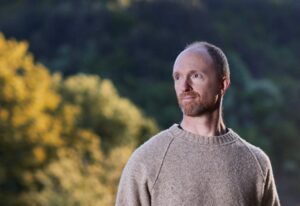
Title lecture
Half a century of observation of the native honey bee in extensive beekeeping: vigour, wavering, decline. And now?!
Contents
Is beekeeping necessarily burdensome for the species? What models of relationship with the species can we hope to achieve in order to respect its nature? Is unlimited beekeeping still sustainable? Why so many obstacles to the conservation of the black bee? History of a Nature&Progress bee farm since 1972.
The author
Vincent Canova is a professional beekeeper in Ardèche (France). Established in the continuity of a family beekeeping practice, he perpetuates the relationship between man and peasant bees which limits the domestication of honey bees. A black bee breeder, he teaches extensive beekeeping that respects the wild nature of the honey bee. Feeling an immense gratitude towards his local bee, he pleads for the recognition of Apis mellifera mellifera regeneration areas in its natural range.
Institutes
Vice-président et cofondateur de la Fédération européenne des conservatoires de l’abeille noire. https://www.fedcan.org/
Président de l’association L’abeille noire des Boutières. https://www.abeillenoiredesboutieres.fr/
Membre de la Commission apiculture Nature&Progrès. https://www.natureetprogres.org/
Auteur dans la revue Abeilles en liberté. https://www.abeillesenliberte.fr/
Publications
Apiculture biodynamique. Ouvrage collectif. https://www.bio-dynamie.org/produit/apiculture-biodynamique/
<span id="trachtpflanzen"></span>
Participation options
Online via video conference (a link to the video conference will be sent out in good time before the event; replay guaranteed)
